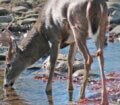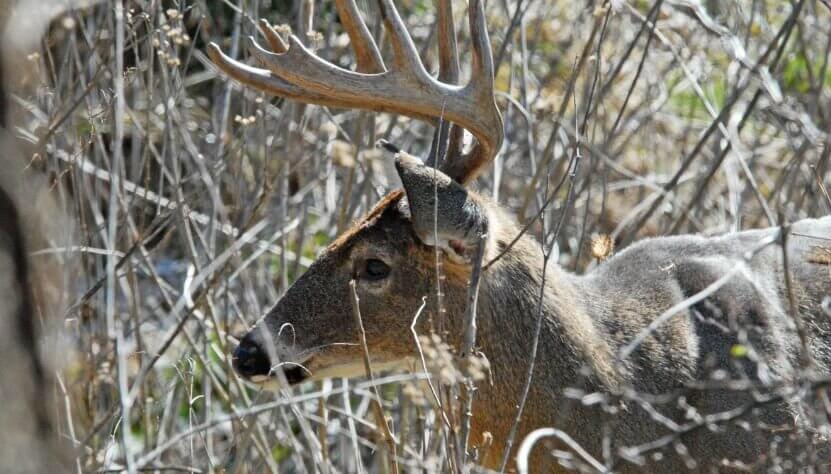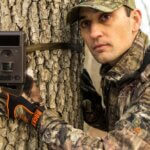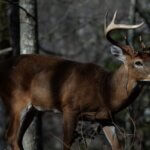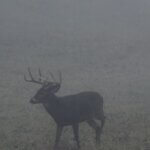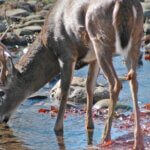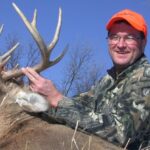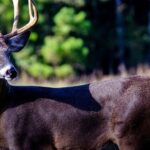Editor’s Note: Deer season starts now. You can improve your chances of taking deer by building stalking trails in pine plantations and using trail/motion sensor cameras. You’ll open-up more land and possibly take bigger bucks on the property you hunt too. Some of the biggest bucks on the land you hunt may live in 2- to 15-year-old pine plantations where the bucks can survive for many years and only come out of the pines when they experience no hunting pressure. Mark Thomas, a wildlife biologist and forester, manages many properties for deer using trail cameras.
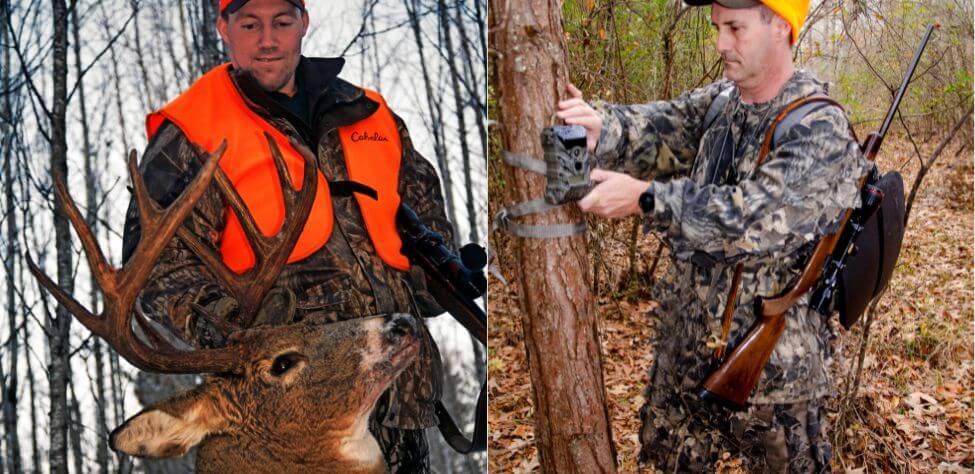
Question: How do you set-up your motion-sensor cameras to get the best information when you’re surveying a deer population?
Thomas: I’ll set-up the areas that I’ll be censusing into equal 100-acre parcels. Then I select a site in the middle of each 100-acre parcel for my camera site and bait station. I go in 5 days before I’ll actually start photographing and pre-bait the area – usually with whole kernel corn – around the camera. I want to get the deer coming to that place, so that I can photograph them. I wear rubber boots to leave as little human odor as possible. I’ll also put a mineral lick out in the same region where I’ve placed the bait. Sometimes the deer will come to a mineral lick for the minerals more frequently than they’ll come to corn, at certain times of the year. I’ve got some photos that show the deer consuming the mineral lick and never feeding on the corn.
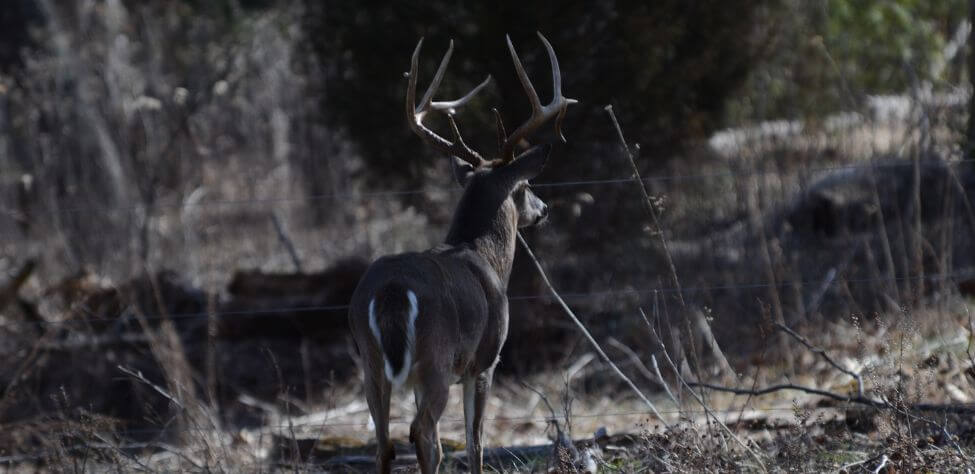
After I have my bait station set-up, I set my cameras to take one photograph every 10 minutes for 10 days. I’ll set the cameras for 24-hour continuous flash usage. With a 5-day pre-bait period and a 10-day camera census, I estimate that you generally can photograph 95% of the deer on the land. I’ll set my cameras 4- to 5-feet high and aim them at the bait station. By restricting the range of your cameras to just the area of the bait station, you generally can get really-high quality pictures of the bucks that come in to feed on the bait. However, the older-age-class bucks, particularly those 6-1/2- to 8-1/2-years old, quickly may get leery of the sound and the flash of the camera. So, you may want to consider choosing a newer camera that doesn’t use sound and flash. But usually you won’t have many of those deer on your property. I’ve designed another way to photograph older-age-class bucks.
Tomorrow: Do Deer Property Surveillance with Trail Cameras

How to Hunt and Take Big Buck Deer on Small Properties
In this book, you’ll hear from 14 hunters who either have gained permission or leased properties as small as six acres to as much as 250 acres, and how they consistently take older-age-class bucks off these little lands.
VERSIONS: AUDIBLE, KINDLE & PRINT

Jim Crumley’s Secrets of Bowhunting Deer
Using a black magic marker and a gray work jumpsuit, Jim Crumley of Buchanan, Virginia, drastically changed the nature and purpose of hunting camouflage when he created the first sportsman’s camouflage – Trebark. Crumley’s love of bowhunting and his desire to be more invisible changed hunting clothing forever.
In this hunting guide, he shares the wisdom that he’s learned throughout his lifetime about how to be a hunter, how to find a deer lease, how to scout for deer, and more.
Special features include how to:
- Have a magic 60 acres to hunt
- Decide the best equipment to use
- Find deer year-round
- Locate land to hunt
- Know the best place to put your tree stand
- Get bucks within bow range
VERSIONS: AUDIBLE, KINDLE & PRINT

How to Hunt Deer Like a Pro
How do you know if the land you hunt has a trophy deer on it? Wildlife manager Bob Zaiglin, of Uvalde, Texas and Jim Crumley, the father of modern-day hunting camouflage, tells you how to find out. GPS can make finding and taking that trophy buck easier. This hunting guide will teach you how to hunt big bucks where no one else can find them, how to call deer, and how to become versatile as a deer hunter, so that if one deer tactic doesn’t work, another one will.
In the chapter, “How to find Bucks at Scrape,” Dr. Keith Causey, retired professor of Wildlife Science at Auburn University, describes the best way to hunt a scrape.
Brad Harrison of Neosho, Missouri, is a nationally-known videographer, professional deer hunter and master at calling deer. Another master is Will Primos of Primos Game Calls. These two experts will tell the best deer calls and when to use them in this book.
And for over 20 years, Bo Pitman, lodge manager of White Oak Plantation, has been studying deer movement patterns. He explains what types of conditions are best for predicting deer movement.
VERSIONS: AUDIBLE, KINDLE & PRINT

Deer hunting and deer hunters are drastically changing each year. To learn new techniques for hunting deer and have more places to hunt, I’ve interviewed some of the best deer hunters in the nation and share their tactics in How to Hunt Deer Like a Pro: Volume II.
In Chapter 10, Jacob Lamar tells you his tactics for consistently taking older-age-class bucks on public lands in several states. Chapter 11, Bob Walker explains how to find places on public lands where you can hunt that 99 percent of the other hunters never have considered hunting. The Bonus Chapter with David Ramey tells you how, where, when and with what equipment to take big Kansas bucks on public lands by hunting in 100-degree weather when others won’t hunt.
Chapter 13, Mark Drury, his family and his guests take mature bucks every season by having more small places to hunt rather than one large property. Drury explains the strategy of having satellite farms to hunt that only may be 50-150 acres each or less. Chapter 15, Pat Reeve, who hunts far-northern states and Canada, says, “I don’t like hunting for mature bucks until the weather is 20 degrees or less.” Chapter 4, Dr. Larry Marchinton says that funnels are the most-reliable stand sites to hunt for big bucks and tells why.
VERSIONS: AUDIBLE & PRINT

